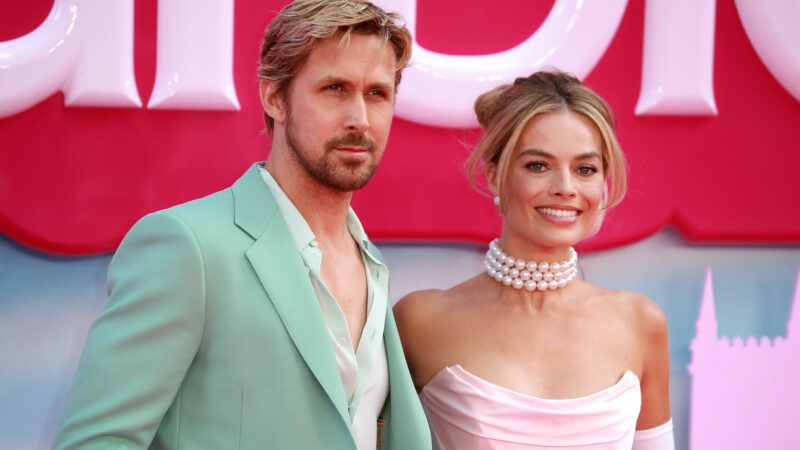Robots Aren't Coming For Movie Stars, Yet
Artificial intelligence is not about to replace your favorite actors.

"We will not be having our jobs taken away and given to robots," declared Breaking Bad star Bryan Cranston at a recent rally for Hollywood's two ongoing strikes. It was a blunt statement of one of the fears animating the labor actions: Many of the issues in the Writers Guild of America and Screen Actors Guild walkouts center around the impact artificial intelligence (A.I.) could have on their livelihoods. Another relatively recent technology, online streaming, features prominently in these battles too.
While A.I. has raised unique concerns related to intellectual property and the use of actors' images, fears around tech-driven job losses in the entertainment industry are not novel. After all, a few decades ago the studios were decrying the VCR as something that could kill movies. Instead it furthered their opportunities to reach audiences.
Art requires a unique spark that A.I. can often mimic but can never fully replace. It can be a powerful tool, but it often lands in an uncanny valley that makes many viewers uneasy. The use (or even just the accusation of using) purely A.I.-generated extras in crowd scenes has already prompted ridicule when the industry has tried it.
At the same time, A.I. can dramatically reduce the cost of certain visual effects and other expensive elements of film production and post-production. This may make it easier for smaller studios to make more movies at a lower cost. In the long term, this could bring more competition to the industry and more opportunities for filmmakers who the big studios might have ignored. So we shouldn't view artificial intelligence as an exclusively harmful force. It is important to consider the tradeoffs involved.
A.I. is not the only technology the strikers are concerned about. Streaming services such as Netflix and Disney+ have been disrupting the industry's residuals. But the internet shouldn't be presumed to be the enemy of creative artists, as it has also given rise to new forms of entertainment that can benefit both creators and consumers alike.
A growing amount of consumer time is being spent on user-generated content sites such as TikTok and YouTube. In fact, the average user now spends between 45 minutes and an hour consuming content on each app. These times are edging closer and closer to the time spent on the traditional streaming giant Netflix.
That might threaten the big studios' bottom lines, but it also offers a way for small and micro-budget projects to directly reach audiences and allow artists to refine their skills. Several actors and singers—including Justin Bieber and The Little Mermaid star Halle Bailey—got their start as YouTubers.
Hollywood's last writers strike occurred in 2007–2008, when many social media and online services were still new. While many movies and TV shows were delayed, creators with new and inexpensive ideas were able to both capitalize on the internet's low barriers to entry and circumvent the strike's logjam to reach an audience directly. (One notable example: Joss Whedon's immensely popular Dr. Horrible's Sing-Along Blog.)
These platforms provide the tools to learn skills and build a following without a costly studio investment. Social media can create word-of-mouth buzz around low-cost independent productions. And it can highlight under-the-radar talent, allowing artists to circumvent the studios or prove their value to industry insiders.
Given the number of dystopian films and television from classics like 2001:A Space Odyssey and Terminator to more recent films like M3GAN and Black Mirror involving artificial intelligence, it is not surprising that Hollywood is focused on tech's potential harms. But these technologies needn't mean apocalypse for the entertainment industry. New technologies mean new opportunities too.



Show Comments (48)